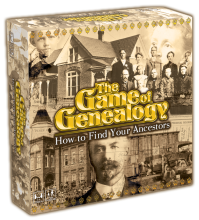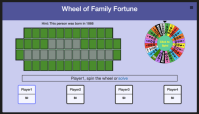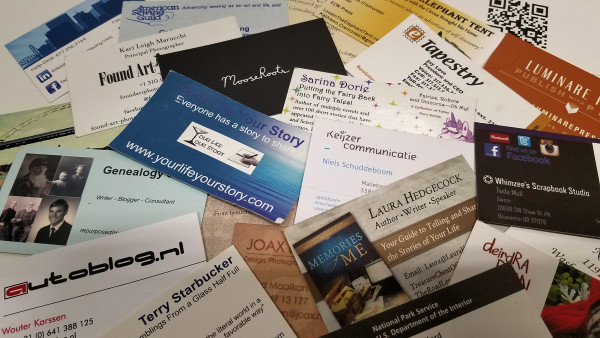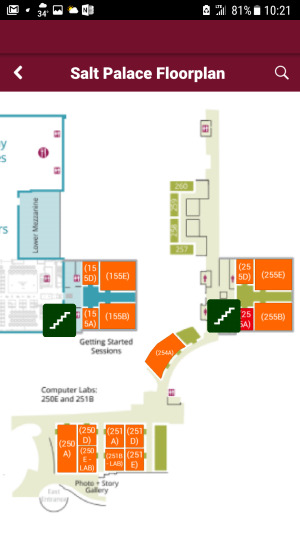This meetup is an introduction to DNA testing for family history research. This is an incredibly vast topic and we will be sharing more on how this all works in the future, but for this event, we kept things very simple and concentrated specifically on:
- Choosing a DNA testing company.
- What to do while waiting for the test results.
- What to do after you receive the test results.
Choosing a DNA Testing Company
DNA tests are not the answer to every family history brickwall nor genealogical question. DNA tests are just one of many tools in your genealogy tool box.
DNA tests show you where on Earth people who share your DNA are most like to be today, not necessarily where they were in the past. Combined with historical references and the data in your family tree on the DNA testing site, the results are assumptions of where your ancestors may have been in the past.
We recommend that you test across multiple companies to get a more fair view of your ethnicity, ancestry, and answers to your genealogy questions.
Test yourself and your oldest living relatives in your direct line, and your cousins’ lines such as a great aunt or uncle. The more tests you have, and the more you share the information from your tests, the easier it is to answer your DNA and genealogical questions.
Ask yourself:
- What do you want to know?
- Answers to health and medical concerns?
- Discover your ethnic roots?
- Find matches to other people, living or dead?
- Answer genealogical questions?
- Have adoption or unknown parentage questions?
- Support your family history research?
- Identify geographic regions your ancestors came from?
- And do you like surprises?
Answers to these questions will narrow down the decision on which tests, and which companies, to start with.
The most popular consumer DNA testing companies with a focus on family history are:
DNA Test Types
There are three common DNA test types for family history research, beyond the scope of medical and health tests. All of these tests will generate matches with people who’ve also tested. If these matches also offer public or accessible family tree data, it makes the process easier to understand your familial matches and expand your family tree data.
Y-Chromosomal DNA Tests: This test explores the father-to-son or paternal line of your ancestors. If you are specifically researching surnames or identification of male direct line ancestors, this is an appropriate test. Family Tree DNA and 23andMe are the most popular testing companies for this test.
mtDNA – Mitochondrial DNA Tests: This test explores the maternal line, the mother-to-daughter pedigree. If you wish to identify the direct line female ancestors, your mother, your maternal grandmother, your maternal grandmother’s grandmother, this is the test for you. It may also help to narrow down or identify hard-to-find females in your family tree if your matches have well-documented family trees. Family Tree DNA and 23andMe are the most popular testing companies for this test.
Autosomal DNA Tests: This test explores both the male and female pedigrees based upon speculative maternal and paternal lines. Using sophisticated chromosomal matching techniques against reference DNA groups and individuals as well as those who’ve taken the same test, it helps to identify what is called “cousin matches.” While it make identify siblings, parentage, and other closer relationships, more often it identifies cousins to multiple degrees of separation such as first, second, third, and so on cousins, or cousins once or twice or more removed. This is the most common test available to the general public. All consumer DNA testing companies offer this test including Family Tree DNA, 23andMe, Ancestry.com, MyHeritage, and Living DNA Ancestry.
The following chart is a simple assessment of the five most popular DNA testing companies and their options.
 The average price of a DNA test as of October 2018 ranges from $49-99 USD and up, depending upon the specialty and options of the tests. Look for upcoming holiday and Black Friday sales and discounts for even better prices.
The average price of a DNA test as of October 2018 ranges from $49-99 USD and up, depending upon the specialty and options of the tests. Look for upcoming holiday and Black Friday sales and discounts for even better prices.
What to Do While Waiting for DNA Test Results
We’ve gathered some anecdotal data and found that the waiting times for DNA results, including ordering and shipping, taking and mailing the test, and waiting for the results, to be an estimated total wait time of 4-12 weeks. So there is plenty of time to prepare and improve your DNA results by researching your ancestors and building your family tree.
The better the information in your public family tree, the better the results for DNA companies with family trees.
- Build your family tree on the DNA testing service. Ensure it is public (and the living are marked living to hide their identities).
- Start with what you know.
- Support what you know with fact-based evidence and records.
- Identify the missing pieces.
- Research, find, and document the answers.
- Learn more about family history research.
The more you learn about family history research by studying online, reading books, reading blogs, joining family history groups online, attending conferences and workshops, and joining local genealogy societies and attending meetings, the easier and better your research and the more you will improve the odds of finding valuate information in your DNA results.
What do Do When You Get the DNA Results
It is exciting for many when notification by email comes in regarding the results of your DNA test. Many are nervous, others eager for answers. Remember, your expectations and hopes may not meet the reality of the information you receive, so be ready for disappointments, confusion, and surprises, just in case. Otherwise, expect to have fun with this.
We say this because some people have found out, at 70 years old, that they were adopted and no one in the family alive today knew anything about it. Or find out that the family story of your ancestors being from Spain or Portugal is revealed to be actually Northern Africa or the Middle East, hidden from the descendants for some reason. Discovering a new ancestor may reveal that they were a criminal, adulterer, or some other surprise. Most people find out their family history is normal, and their expectations are met, but many find a variety of surprises, good and bad.
When you get your DNA results, explore your diversity. Find your tribe. Research them. The more you learn about the groups your ancestors are associated with, the better for everyone, especially with your family when you share this story.
Identify the locations of your ancestors. This expands the areas you may wish to research and find records and documents about their lives. It may also inspire you for your next vacation destination.
This is an opportunity to not only find living cousins but expand the data in your family tree through the open and public family trees of those who match. This is great for planning your next family reunion with new additions to the family.
Most importantly, if you have genealogical questions, like who were the parents of your grandmother, or what were the names of your grandmother’s sister’s children and what happened to them, this is where you may find the answers.
Ancestry.com currently offers the most visual, easy-to-understand maps and charts regarding your family’s DNA and ancestral information.
Be ready for anything. And make it fun. This is fun. Family history research can be hard work, involve a wide variety of research plans, but it is mostly fun. Even the surprises can be fun. At the very least, the information adds to your family’s stories. The visual maps and charts hook into historical references for massive migration moments in history and big events to help put your family history in context of the times.
MyHeritage offers similar features but they are new to the consumer DNA market and expect to see changes and improvements over time. This applies to all DNA testing companies. Ancestry.com just updated their algorithms and many were unhappy with the changes. Expect them as the technology improves.
Once you have had fun looking at all the charts and information, shared them with friends and family, and contacted some living cousins for more information and answers to your questions, expand your reach.
In addition to taking more DNA tests and getting as many older family members to test, you can export the raw DNA data from most companies and share it with others as well as upload it to other third-party DNA tools and services. This not only gets you more bang for your DNA buck, so to speak, it helps you expand the potential for matches and help others do the same.
Family Tree DNA and MyHeritage allow for uploads of tests from other companies to create cross-reference data points.
GEDMatch and DNAGedcom allow you to upload the DNA test data from most of the other popular companies to their services so you may use their free tools to analyze your DNA or compare it to other DNA tests. You also become a larger part of the DNA reference pool, increasing the odds of finding more matches and family history data.
For more information on DNA testing and choosing and using DNA tests, see:
- Which Ancestry DNA Test is the Best? A Detailed Comparison Guide – Family History Daily
- Choosing a DNA testing company – ISOGG Wiki
- Free Review of Ancestry DNA Tests – Genetics Digest
- DNA Do-Over: Downloading and Uploading Your DNA Test Data – Abundant Genealogy
- Autosomal DNA Transfers – The DNA Geek
- This Clever Google Search Tactic Will Help You Find Your Ancestors on Any Genealogy Website – Family History Daily
- Use GEDmatch for Completely Free DNA Reports and Cousin Matches – Family History Daily
Upcoming Events
We highly recommend you become involved with your local genealogy and family history society or group. Check out a list of them from the US Federation of Genealogy Societies (FGS), FamilySearch Wiki’s List of US Genealogy Societies, and your state and providence historical societies and governments. Also consider joining the Virtual Genealogical Association, a new society based on the web and irrespective of geographic locale.
 RootsTech has announced two conferences this coming year, one in Salt Lake City, Feb 27-March 2, 2019, and a new one in London, England, Oct 24-26, 2019. The Salt Lake City conference opens registration September 20.
RootsTech has announced two conferences this coming year, one in Salt Lake City, Feb 27-March 2, 2019, and a new one in London, England, Oct 24-26, 2019. The Salt Lake City conference opens registration September 20.
 The Annual Free Virtual Genealogy Fair with the US National Archives and Records Administration (NARA) is Wednesday, October 24, 2018, from 10AM – 4PM EDT. We will be Live Streaming the day-long event in Altspace, so please join us. Desktop/2D access is recommended.
The Annual Free Virtual Genealogy Fair with the US National Archives and Records Administration (NARA) is Wednesday, October 24, 2018, from 10AM – 4PM EDT. We will be Live Streaming the day-long event in Altspace, so please join us. Desktop/2D access is recommended.
For information about local and international genealogy and family history events, chek out ConferenceKeeper and their calendar.
Q&A and Things to Know
As this was our first meeting, much of the meeting was spent discussion the future of this meetup.
Please note that because we will have speakers over time as well as educational and informative events, it is good to know that there are two free ways to access Altspace.
- Virtual Reality: Using a headset such as Samsung Gear, Oculus Go, Rift, or another, you may participate in 3D, which means your eyes will be covered and it is a challenge to take notes.
- 2D/Desktop: Altspace installs directly to your computer or phone as an independent program or app. Once installed, you may enter Altspace in 2D on your Windows or Mac machine, using your mouse and keyboard to navigate, or your phone with the option “without headset.” Both methods are “eyes-free,” meaning your hands are free to type or take notes during the meetup.
Future topics were suggested and included:
- 3D Tools and Modeling
- AR Tools and Apps
- Certification
- Digitization
- DNA
- Genealogy Technology
- Guest Speakers
- Industry News
- Regional Research
- Research Techniques
- Society Issues and Challenges
- Study/Research Groups
- VR Applications
- Watch Webinars
Much thanks also goes to my assistant, Darrell Gulstrom, professional genealogist.
The next meeting is 22 Oct 2018 at 6PM PDT. Hope to see you there!

 The
The 










 Nothing says love and support than a check in the form of a donation and/or membership in a genealogy or historical society. You are giving back to keep alive the education and preservation of the heritage and culture of our ancestors.
Nothing says love and support than a check in the form of a donation and/or membership in a genealogy or historical society. You are giving back to keep alive the education and preservation of the heritage and culture of our ancestors.  It may not seem like you are giving back when you attend local and distant genealogy workshops and conferences, but you are helping. Your ticket and presence keeps the event alive and prospering. And more.
It may not seem like you are giving back when you attend local and distant genealogy workshops and conferences, but you are helping. Your ticket and presence keeps the event alive and prospering. And more. As digitization methods become more affordable, many historical and genealogy societies and groups are working hard to digitize their record. With recent fires of historical archives and government agencies, and the risk of more, the urgency to duplicate their precious inventory of books, papers, photographs, manuscripts, photo albums, etc., increases.
As digitization methods become more affordable, many historical and genealogy societies and groups are working hard to digitize their record. With recent fires of historical archives and government agencies, and the risk of more, the urgency to duplicate their precious inventory of books, papers, photographs, manuscripts, photo albums, etc., increases. 
 Help your grandparents, parents, children, grandchildren, and other family members to understand and preserve their family history.
Help your grandparents, parents, children, grandchildren, and other family members to understand and preserve their family history.  I have always believed in giving without expectation of return, enjoying the process of giving rather than seeking other rewards. Consider all the ways you may give to genealogy.
I have always believed in giving without expectation of return, enjoying the process of giving rather than seeking other rewards. Consider all the ways you may give to genealogy. 

 There are many around the web offering advice for what to do to prepare for RootsTech, the world’s largest genealogy conference happening every February in Salt Lake City, and many helping you figure out the ins and outs during the conference. I’m here to tell you what to do after the conference is over, after you’ve come home and collapsed.
There are many around the web offering advice for what to do to prepare for RootsTech, the world’s largest genealogy conference happening every February in Salt Lake City, and many helping you figure out the ins and outs during the conference. I’m here to tell you what to do after the conference is over, after you’ve come home and collapsed.




 upstairs, walk a long hallway, then downstairs (or escalators) to the rooms in the furthest reaches of the convention hall. You think there is another way and there isn’t, so stop trying.
upstairs, walk a long hallway, then downstairs (or escalators) to the rooms in the furthest reaches of the convention hall. You think there is another way and there isn’t, so stop trying.

